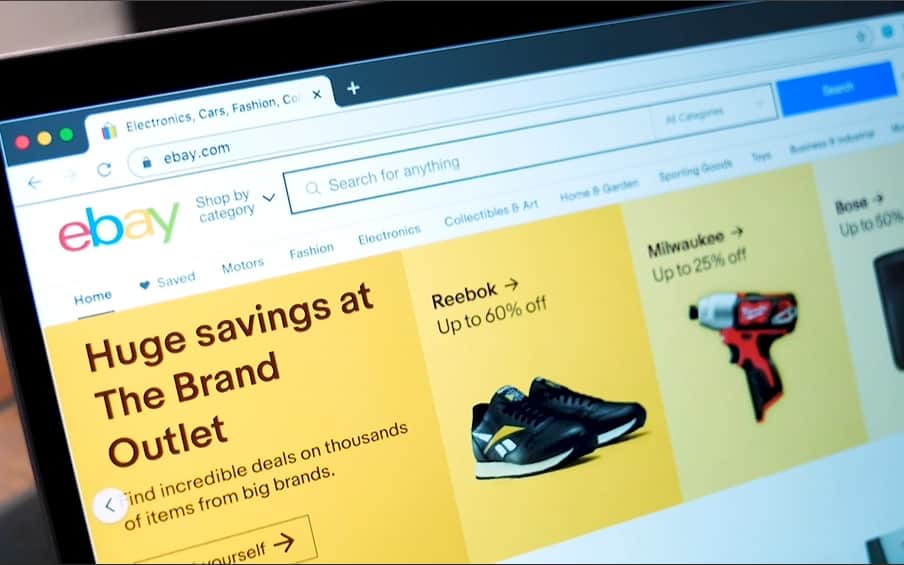
eBay has a somewhat complicated history with coupons. The online auction site has weathered controversy involving the sale of other companies’ coupons, but it’s always happily offered its own – until recently. Now eBay is explaining how it hopes doing away with its “legacy couponing” will help increase profits and drive “low-value” customers away.
Earlier this year, eBay made changes to its “eBay Bucks” loyalty program, which offered users 1% in rewards on all purchases. Now rewards will only be available during “limited time” bonus promotional periods. eBay also made changes to its coupons – instead of offering blanket dollars- or percent-off coupons good on just about anything eBay sold, sellers now have the ability to create their own individualized coupons for their own stores or products, if they choose.
The goal behind all the changes? To drive away those pesky deal-seeking coupon clippers and instead focus on bigger buyers who will spend more and pay full price.
eBay has “discontinued legacy couponing that’s skewed toward low-value buyers,” CEO Jamie Iannone explained to investors last week. Instead, “over the past year, we have focused on attracting and retaining high-value buyers… These actions are resulting in a gradual evolution of our buyer base over time.”
Those “low-value buyers” are eBay shoppers whom Iannone has described in the past as being “infrequent or one-and-done buyers” who may be attracted by a deal but don’t stick around to buy more. He said low-value buyers have historically made up approximately half of eBay’s entire buyer base, but they’re responsible for only about 5% of sales volume. High-value buyers, in contrast, make up about 20% of eBay shoppers but are responsible for 75% of overall sales volume.
“So you can obviously see why we’re focused on that strategy as we continue to evolve the platform,” Chief Financial Officer Steve Priest said.
But eBay is prepared for a little pain before it sees some gains. The total number of active buyers has declined 5% from the same time last year, a decline that Priest said “was primarily driven by low-value buyers… We are confident in this approach, but we recognize the reduction in low-value buyers could pressure our rolling 12-month ‘active buy’ account in the coming quarters.”
One way eBay hopes to retain and attract high-value buyers is by offering sellers the ability to offer their own customized deals and discounts to their best customers. That capability was introduced earlier this year, and “since launch, more than 2.5 million buyers have completed a repeat purchase from a store using our new seller-funded coupons,” Iannone said. Not only does the new couponing program reward loyal shoppers, but it shifts the responsibility and expense of marketing onto sellers instead of onto eBay itself. “Now sellers are funding the coupons to drive buyers back to the site,” Iannone said. “That’s a huge benefit for sellers and a huge benefit for eBay.”
As you might expect, many “low-value buyers” aren’t thrilled with the changes. “eBay used to do $5 or $3 no-minimum coupons,” one shopper wrote on an online message board. “Remember the 10% -20% coupons, some good deals back then,” another wrote. “No good deals, removal of all worthwhile sales, and now this. Haven’t seen anything good about this website for a while,” another lamented.
Some eBay sellers aren’t particularly happy either. “Increasing fees, decreasing coupons/cash back, increasing advertisements on the site and the uneven treatment of sellers in disputes have made it a genuinely terrible experience to sell anything on their platform,” one message board participant wrote. “They got rid of the great coupons, they have tax now, they dropped the 1%, and raised their fees. I’m out,” another added.
All of this comes many years after eBay’s last foray into coupon controversy. Back in 2013, the site announced restrictions on the number and types of manufacturer’s coupons that could be sold. Before then, it was just about anything goes, as many sellers offered clipped insert coupons in endless batches of 20, in volumes that only seemed possible if the inserts were obtained illicitly. There were also plenty of suspected and confirmed counterfeit free-item coupons available on the site. The coupon industry had long pressured eBay to crack down, so its decision to limit instead of ban coupon sales was something of a half-measure that hasn’t put an end to questionable coupon sales.
eBay’s crackdown on the sale of manufacturer’s coupons didn’t end the practice, but instead drove buyers and sellers off of eBay to do business elsewhere. The verdict is still out on whether eBay’s decision to cut back on offering its own coupons, will do the same.
Image source: eBay









